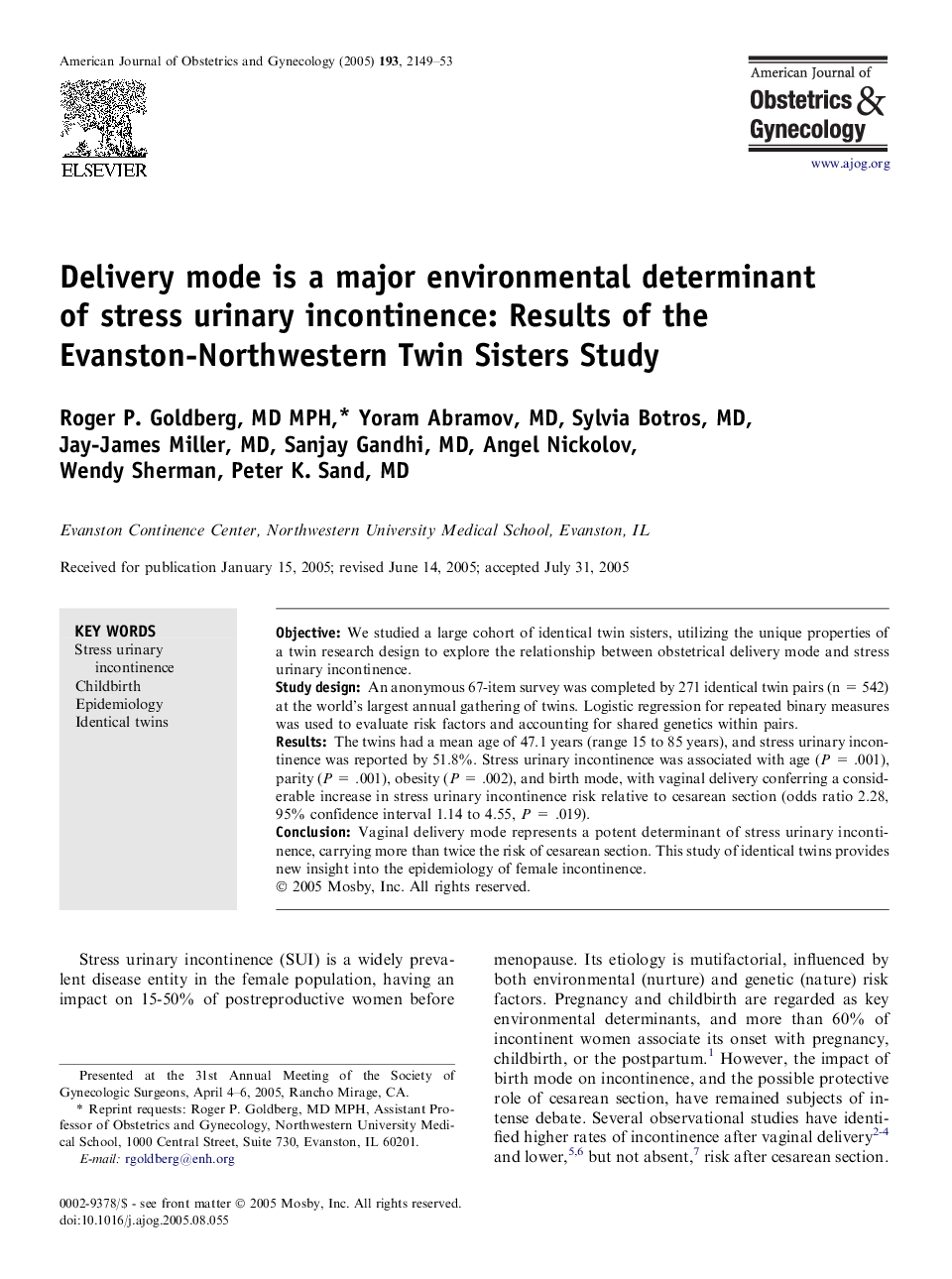| Article ID | Journal | Published Year | Pages | File Type |
|---|---|---|---|---|
| 3440901 | American Journal of Obstetrics and Gynecology | 2005 | 5 Pages |
ObjectiveWe studied a large cohort of identical twin sisters, utilizing the unique properties of a twin research design to explore the relationship between obstetrical delivery mode and stress urinary incontinence.Study designAn anonymous 67-item survey was completed by 271 identical twin pairs (n = 542) at the world's largest annual gathering of twins. Logistic regression for repeated binary measures was used to evaluate risk factors and accounting for shared genetics within pairs.ResultsThe twins had a mean age of 47.1 years (range 15 to 85 years), and stress urinary incontinence was reported by 51.8%. Stress urinary incontinence was associated with age (P = .001), parity (P = .001), obesity (P = .002), and birth mode, with vaginal delivery conferring a considerable increase in stress urinary incontinence risk relative to cesarean section (odds ratio 2.28, 95% confidence interval 1.14 to 4.55, P = .019).ConclusionVaginal delivery mode represents a potent determinant of stress urinary incontinence, carrying more than twice the risk of cesarean section. This study of identical twins provides new insight into the epidemiology of female incontinence.
